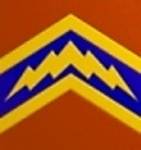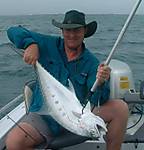Battle of the Ore Mountains Museum
6
Comments
IThe Battle of the Ore Mountains
On September 11th, 1944, high above the Ore Mountains, on the Czech-German frontier, a formation of B-17G Flying Fortresses of the 100th Bomb Group, 3rd Bomb Division (“The Bloody Hundredth”), escorted by P-51 Mustang fighters of the 55th and 339th Fighter Group 8th USAAF clashed with a formation of German Me109 and FW190 fighters of the II. (Sturm) and III. Gruppe of Jagdgeschwader 4. The result was that more than 50 airplanes were shot down during the battle. Due to the furiousness of the combat, most of the shot down aircraft fell in a very small region of the Czech and German Ore Mountains. This sunny September day entered the history as a Black Monday over the Ore Mountains.The 100th BG, otherwise known as “The Bloody Hundredth”, had lost more then one third of its bombers in the battle, which the Group had sent out to this mission. The JG4 sustained a casualty rate of over 50 percent … Solely in the Kovarska region, four B-17Gs and at least five Luftwaffe fighters crashed. Further three B-17Gs and three Geraman fighters fell in a close vicinity of German towns of Crottendorf and Neudorf. Many others returned damaged to their home bases.
A half a century later…
In September 1997, the direct opponents of this battle, the German and American airmen met in Kovarska after 53 years, in order to open the Museum dedicated to them. For the first time since the end of WWII, they returned to the place, where they went though hell on September 11th, 1944, where they survived thanks to their parachutes and where their friends died.By opening of the Museum in September 1997, a new chapter of the “Black Monday over the Ore Mountains” was written. The Museum is not only an unique collection of documents of the biggest war event of the vast Czech – German region of the Ore Mountains, but also helps to cover white spots in the history of WWII in Europe.
Visit of the Museum
On day two of our Czech model trip we had the chance to visit the "Air Battle over the Ore Mountains" museum in Kovarska. For us aircraft modellers, this museum is well known because it is closely linked to the Eduard brand (see company visit here). Indeed, Jan Zdiarsky who is one of the curators of the museum, is working for the Czech plastic model kit manufacturer and one of their first collaboration was the Royal Class kit of the Fw190 A-8/R2. This Limited Edition was not only remarkable because it provided two very detailed models of the famous German WWII fighter, but also because of the presence of a small piece of metal from one of the aircraft that fell during the Battle over the Ore Mountains. This inclusion made it a very unique item in plastic model kit history.The "Air Battle over the Ore Mountains" museum is located in Kovarska, a small town near the German border in the northwest of the Czech Republic. M. Jan Zdiarsky was kind enough to arrange a room for us in the brand new "Penzion Avionika" which has a nice WWII aviation flair and which is only 5 mn away from the museum by feet. I can only recommend this place if you happen to be in the region for some holidays. I just hope that you will have more luck with the weather than we had.
The entry of the museum is not very spectacular and the building still looks like what it was in the past: an elementary school. However, as soon as you get inside, it seems as if you are entering into some kind of time-machine. WWII aviation artifacts of many origins are displayed there and while most of them are related to the September 11th, 1944 Battle, some are only linked to it. Others have no real connections to the event such as a part of a Jumo 004 engine which powered the first jet Me 262 or an experimental wooden fuel tank for the night version of the aircraft.
The museum has four display rooms: the meeting room, the introduction room, the equipment room and the main room.
The meeting room is rather big with a relative small number of exhibits. It is mostly destined to receive people during Airmen reunions, veterans actions but also to offer a starting point for visitors. While we were at the museum, on Wednesday afternoon, a visit was organized for students from a nearby school. The young people received some explanations about the Air Battle of September 11th via video movies before visiting the other rooms.
The introduction room explains the situation of the air war over Europe in 1944, the air war strategy and the history of the units involved in the Battle over the Ore Mountains. Some interesting artifacts are displayed in this room such as some pieces of a Fw190 or a B-17. Also noticable in this room are one intrument panel of a "Flying fortress" and one instrument panel of a "Mustang". While both are constructed around a replica frame, the instruments are original, some of them having been donated while others have been acquired during auctions. A nice 1:48 scale diorama of a B-17 being serviced can be seen in this room and not far away a 1:2500 scale model of Thorpe Abbott airbase, home of the 100th Bomb Group.
The equipment room is the smallest but perhaps the most moving of all. There you can see personal artifacts, mainly donated thanks to the 100th Bomb Group Fondation, but also exhibits from other countries. The room is very dark with only a delicate light illuminating the items on display. The atmosphere is almost mystical...
The last room is the biggest of all. It is composed of many showcases dedicated to one pilot or one aircraft crew. Each showcase is composed of various artifacts gathered on crash sites but also of personal items which have been donated by the family of the fallen pilots and sometimes model reproduction of aircraft. Each showcase makes you go from past to present or move from intact to destroyed objects in a fraction of seconds, making one realise how small the separation between live and death is. The presence of model kits is interesting in that it emphasizes the difference between the machine before and after the battle. Rather than write a list of all the exhibits present in the main room, I will let the accompanying pictures of this feature speak for themselves.
Conclusion
I must say a big thank you to M. Jan Zdiarsky for having devoted most of it's time to us on this day. We made three visits to the museum on that day and we could have easily spent one more day there so dense the content of the museum is. It is obvious that this place is a labor of love for M. Zdiarsky and the volunteers who work there and that it is an homage to the fallen pilots, but also to their families. As such it is more a museum about about the men than the machines they flew.Note: some photos have been shot by Steffen Arndt who allowed me to use them for this feature. Many thanks.
Comments
 Errr, I would not really say so
Great report!
all the best
Steffen
Errr, I would not really say so
Great report!
all the best
SteffenJUN 19, 2010 - 08:00 AM
What a fabulous museum!
Its small dedicated museums like this that are so important in esuring that the sacrifices made during that time are never forgotten, and its very good to see that they work in conjunction with the 100th BG people.
Congratulations!
Nige
JUN 19, 2010 - 09:52 AM
Excellent feature Jean-Luc. It really does bring home the sacrifices that were made by both sides.
Andy
JUN 19, 2010 - 10:40 AM
Great article J-L, once again I'm jealous of your trip !!
Cheers, D
JUN 19, 2010 - 11:51 AM
This was a very interesting visit for you all I'm sure. I enjoyed reading and looking at the photos. Thank you. That German drop tank looks natural metal? Is that the way it was found or just the passage of time has eliminated the paint? Russell
JUN 19, 2010 - 01:31 PM
Hi all,
Thanks for having read the article.
No, the drop tank wasn't natural metal but painted light blue originally. But like on other pieces present in the museum (Fw190 gun cowl) the paint has disappeared in some places because of the weathering.
Jean-Luc
JUN 21, 2010 - 06:43 PM
Copyright ©2021 by Jean-Luc Formery. Images also by copyright holder unless otherwise noted. The views and opinions expressed herein are solely the views and opinions of the authors and/or contributors to this Web site and do not necessarily represent the views and/or opinions of AeroScale, KitMaker Network, or Silver Star Enterrpises. Images also by copyright holder unless otherwise noted. Opinions expressed are those of the author(s) and not necessarily those of AeroScale. All rights reserved. Originally published on: 2010-06-19 00:00:00. Unique Reads: 11325













































